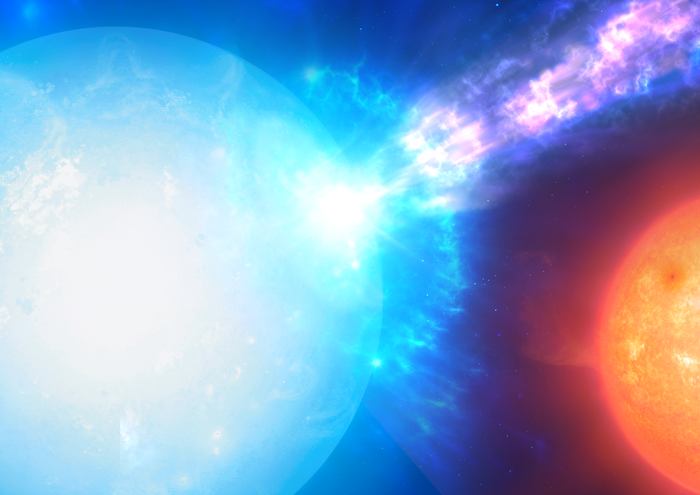Scientists see entirely new kind of explosion happening in space

Scientists have spotted an entirely new kind of explosion happening in space.
Astronomers say the explosion could change our understanding of how stars erupt. And their kind – micronovae, a thermonuclear blast – could actually be common throughout the universe.
But they last for just a few hours, making them very difficult to actually spot.
The blasts happen on surface of some stars. Though they are short, they are powerful, rapidly burning through massive amounts of stellar material.
Researchers spotted the phenomenon in three white dwarfs, which are the leftovers of dead stars. In each case, they were devouring a companion star.
The scientists, led by researchers at Durham University, spotted the explosions through Nasa’s Transiting Exoplanet Survey Satellite, or TESS. That spacecraft is usually used to look for exoplanets, or other worlds outside our solar system.
“Looking through astronomical data collected by Nasa’s TESS, we discovered something unusual: a bright flash of optical light lasting for a few hours. Searching further, we found several similar signals,” said Nathalie Degenaar, an astronomer at the University of Amsterdam.
Scientists now hope to use the findings to discover more of the micronovae. That in turn could help change our understanding of how stars erupt in thermonuclear explosions.
“We have discovered and identified for the first time what we are calling a micronova,” said lead author Simone Scaringi from the Centre for Extragalactic Astronomy at Durham University.
“The phenomenon challenges our understanding of how thermonuclear explosions in stars occur. We thought we knew this, but this discovery proposes a totally new way to achieve them.
“It just goes to show how dynamic the Universe is. These events may actually be quite common, but because they are so fast they are difficult to catch in action.”
The findings are published in a new paper, ‘Localised thermonuclear bursts from accreting magnetic white dwarfs’, in the journal Nature.
Join our commenting forum
Join thought-provoking conversations, follow other Independent readers and see their replies
0Comments